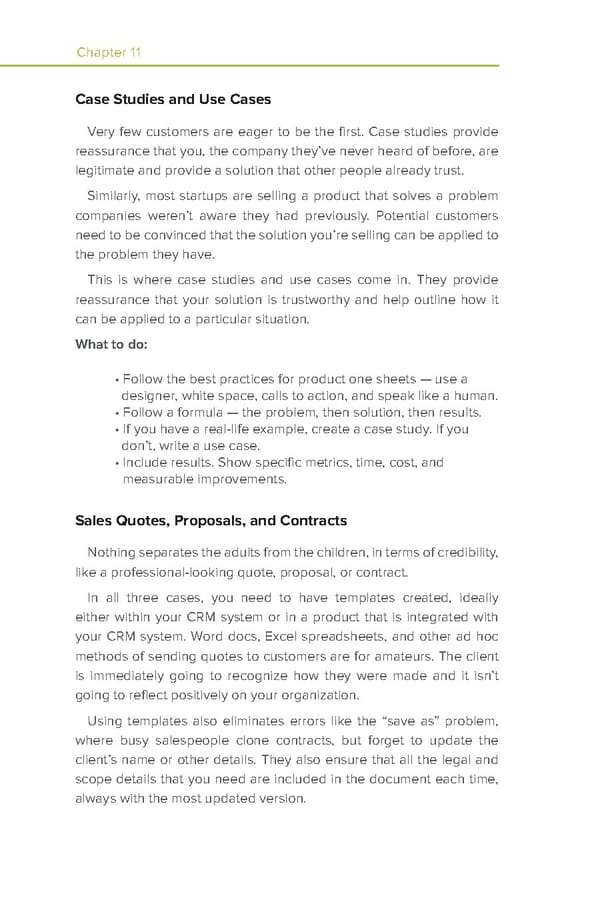Chapter 11 Tools of the Trade Case Studies and Use Cases Very few customers are eager to be the first. Case studies provide reassurance that you, the company they’ve never heard of before, are legitimate and provide a solution that other people already trust. Similarly, most startups are selling a product that solves a problem companies weren’t aware they had previously. Potential customers need to be convinced that the solution you’re selling can be applied to the problem they have. This is where case studies and use cases come in. They provide reassurance that your solution is trustworthy and help outline how it can be applied to a particular situation. What to do: • Follow the best practices for product one sheets — use a designer, white space, calls to action, and speak like a human. • Follow a formula — the problem, then solution, then results. • If you have a real-life example, create a case study. If you don’t, write a use case. • Include results. Show specific metrics, time, cost, and measurable improvements. Sales Quotes, Proposals, and Contracts Nothing separates the adults from the children, in terms of credibility, like a professional-looking quote, proposal, or contract. In all three cases, you need to have templates created, ideally either within your CRM system or in a product that is integrated with your CRM system. Word docs, Excel spreadsheets, and other ad hoc methods of sending quotes to customers are for amateurs. The client is immediately going to recognize how they were made and it isn’t going to reflect positively on your organization. Using templates also eliminates errors like the “save as” problem, where busy salespeople clone contracts, but forget to update the client’s name or other details. They also ensure that all the legal and scope details that you need are included in the document each time, always with the most updated version.
 Tools of the Trade Page 5 Page 7
Tools of the Trade Page 5 Page 7